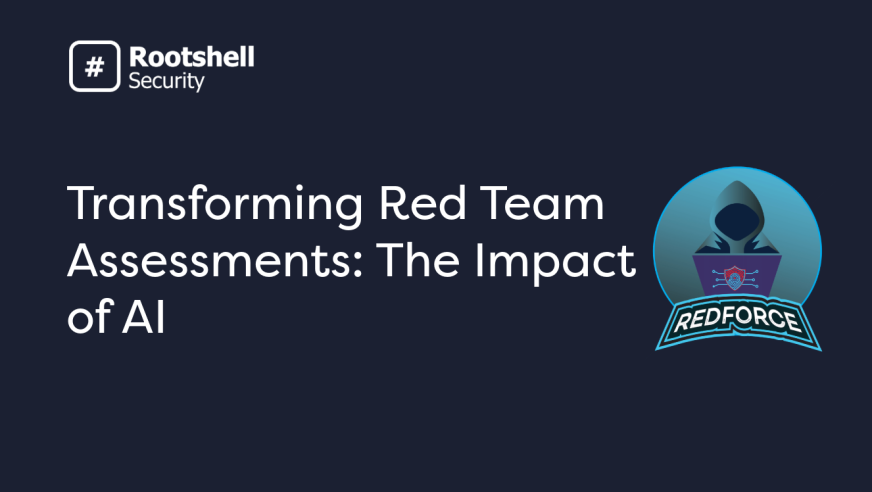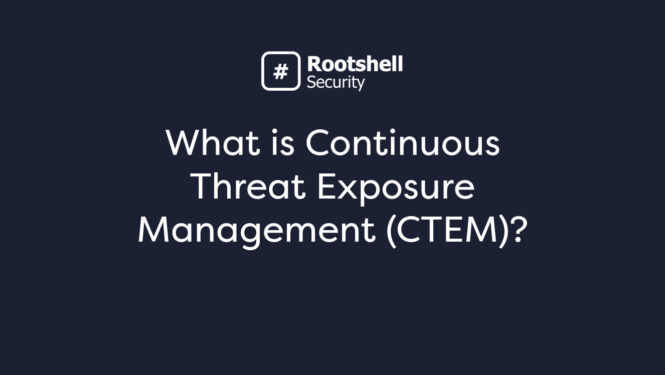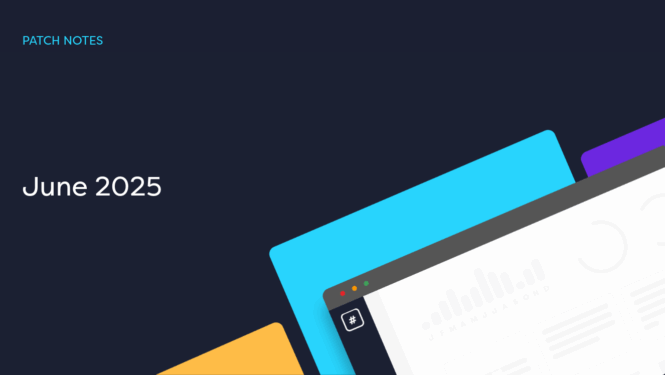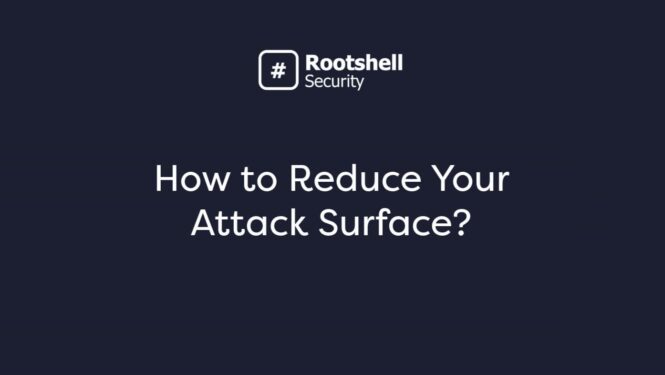The cyber security world is an ever-evolving landscape, staying one step ahead of potential threats has become increasingly challenging. Red Team assessments, which simulate real-world cyber attacks to identify vulnerabilities and weaknesses in an organization’s defenses and responses, have traditionally relied on human expertise and creativity. However, the introduction of Artificial Intelligence (AI) has revolutionized the field, offering both Red Teams and organizations under assessment a set of powerful tools to enhance security measures.
In this blog, we will explore how AI has transformed Red Team assessments, providing insights into its benefits, challenges, and the future of this dynamic relationship.
When we hear the word Red Team, different ideas of ‘hacking’, ‘breaking in’, ‘Simulation’ etc. spring to mind. Typically Red Team assessments have been a very manual process and to be honest, they should still be to a degree, for a number of reasons which I will go into.
Automation to make economies and efficiency is most certainly a must requirement, but cannot come as a trade-off for damage or unacceptable risk of something going wrong. Believe me, I have heard some horror stories where penetration tests have gone wrong or have impacted something that has translated into value loss of an asset. Automation can certainly increase that risk and should be meticulously managed!
Red Teams and Simulated Attack Assessments should be measured and as true to the actions of a real Threat Attacker that we can risk tolerate. Considerations should always be aligned to a Threat Actors tactics, techniques and procedures (TTPs’) and understanding a particular attackers motivations, however, we should always have a finger on the pulse and risk assess at all stages of the assessment.
Red Team assessments are becoming ever more complicated and dynamic, this has been especially identified at Rootshell as clients are learning and are maturing in the cyber security space, making assessments more challenging, which is a good thing!
Having the ability to engage and utilize AI when delivering Red Teams has ‘Up’d the game’ and when risk managed and controlled properly, AI has and will continue to exponentially increase to the skills and delivery of a Red Team.
So lets take a look at where AI can be integrated and ‘Up the game’ of a Red Team when managed and monitored correctly.
The Role of AI in Red Team Assessments
Rootshell deliver Red Team assessments and alike mature testing on a daily basis and we have found that one of the most significant contributions of AI to Red Team assessments is the automation of repetitive tasks.

AI-powered tools can enumerate vast networks and systems quickly, identifying potential vulnerabilities more efficiently than human analysts can or could. We have found that this allows the Red Teams to focus their expertise on more complex and creative attack strategies.
Rootshell have established that pre-attack actions could also leverage AI, especially when risk managed. AI-driven attack surface identification can occur at a pace that humans simply cannot match. For example, when identifying attack surfaces, resultant attack surface data is introduced and leveraged by The Rootshell Platform which is then aggregated and made sense of. This has accelerated the ability for the Red Team to quickly identify targets and hone in on the attack journey quicker. Furthermore, this also allows organizations to identify and address vulnerabilities in real-time, reducing the risk of malicious actors exploiting weaknesses.
When harvesting and collecting resultant data from the differing stages of a Red Team, AI can analyse these massive datasets to develop sophisticated attack strategies, this can allow Red Teams to fine-tune their tactics and prepare for the unexpected.
Continuous monitoring is a necessary requirement when attempting to achieve cyber resiliency. Rootshell’s AI leveraged Red Team assessments and live reporting can provide continuous monitoring, threat and exploit detection, which enables organizations to maintain a proactive security posture. This ongoing vigilance is essential in an era where cyber threats are constantly evolving.
As with all things, there should also be healthy concerns around the pitfalls and risk points of utilizing AI in Red Team Assessments. Rootshell understand that while the benefits of incorporating AI into Red Team assessments are substantial, challenges must also be considered, for example ethical considerations, potential regulations around the use of AI in the future, false positives and knowing that the human expertise cannot and should not be totally removed.
How Rootshell Utilizes AI in Red Team Assessments
By listening, working and partnering with our clients, we have rapidly evolved how Rootshell delivers it’s Red Team engagements. The impact and evolution of AI integration has been employed with meticulous risk considerations and management across all stages of a Rootshell Red Team delivery.
Rootshell’s vision begins with the recognition that modern threats require modern solutions. Rootshell’s Red Team, comprised of seasoned cyber security experts, combines their deep knowledge with cutting-edge AI technologies to simulate real-world attacks more effectively and efficiently.
Of the many areas, Rootshell utilizes AI is by enhancing reconnaissance and information gathering. Traditional Red Teams would spend considerable time gathering data about their target, but AI-powered tools can swiftly sift through vast datasets, identifying potential vulnerabilities, targets, and weak links in the target’s infrastructure. Machine learning algorithms analyse historical breach data, identifying patterns and trends to predict possible attack vectors. This not only expedites the initial phases of a Red Team assessment but also improves accuracy.
Furthermore, AI assists in the post-assessment analysis phase. Rootshell uses The Rootshell Platform to process the vast amount of data collected during the Red Team engagement, helping to identify weak points and suggesting proactive measures for mitigation. These insights empower organizations to bolster their security posture effectively.
The Rootshell Platform leverages AI in order to offer continuous monitoring capabilities, ensuring that organizations stay protected even after the Red Team assessment is complete. Machine learning algorithms can detect anomalous activities in real-time, enabling swift responses to potential threats.
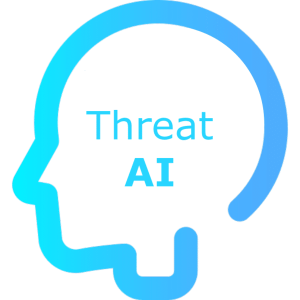
In conclusion, Rootshell Security has embraced the use of AI in the delivery of Red Team assessments which has most certainly revolutionized the way our Red Team engagements are delivered. By harnessing the power of AI for reconnaissance, attack scenario creation, evasion techniques, analysis, and continuous monitoring, Rootshell provides its clients with a comprehensive and proactive approach to security.
This fusion of human expertise and artificial intelligence ensures that organizations are better prepared to defend against the ever-evolving landscape of digital threats.
The bottom line here is that we should embrace AI as opposed to avoiding it. With careful consideration and meticulous risk assessment, the integration of AI into Red Team assessments is reshaping the cyber security landscape. It empowers organizations to identify and address vulnerabilities more effectively while challenging Red Teams to adapt to a new era of cyber security. As AI technologies continue to evolve, so too will the strategies and tools used in Red Team assessments, ensuring that cyber security remains a dynamic and ever-improving field in the face of emerging threats.
